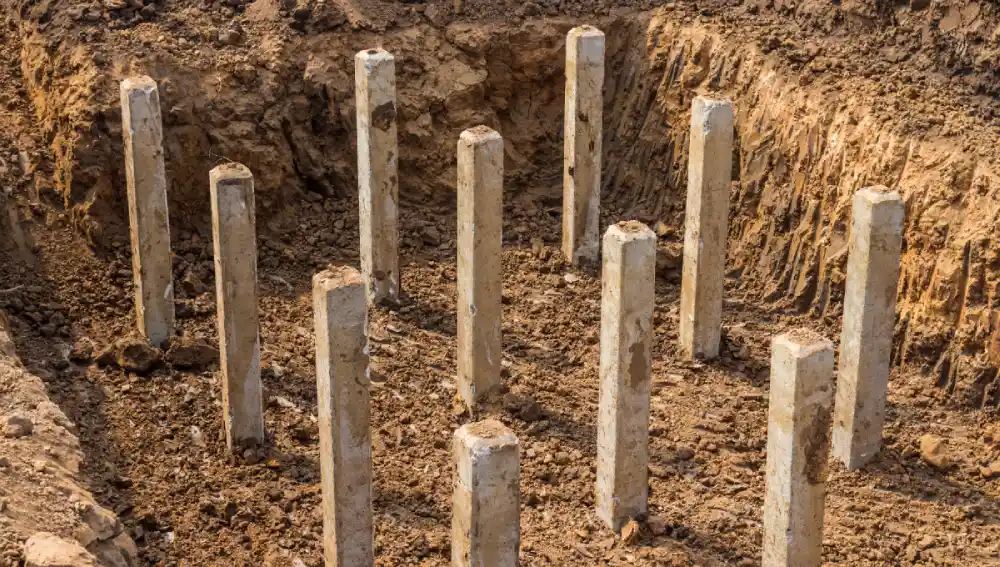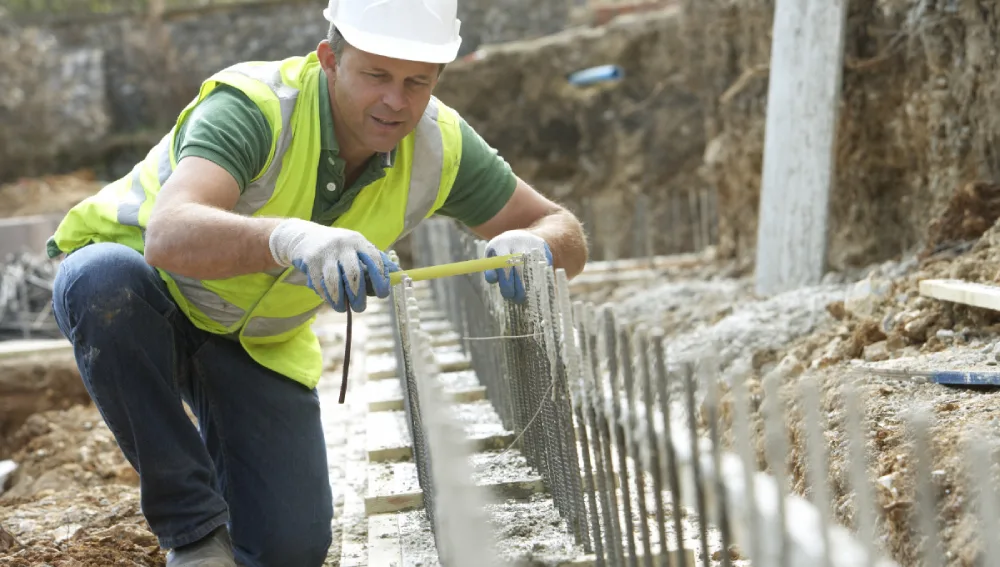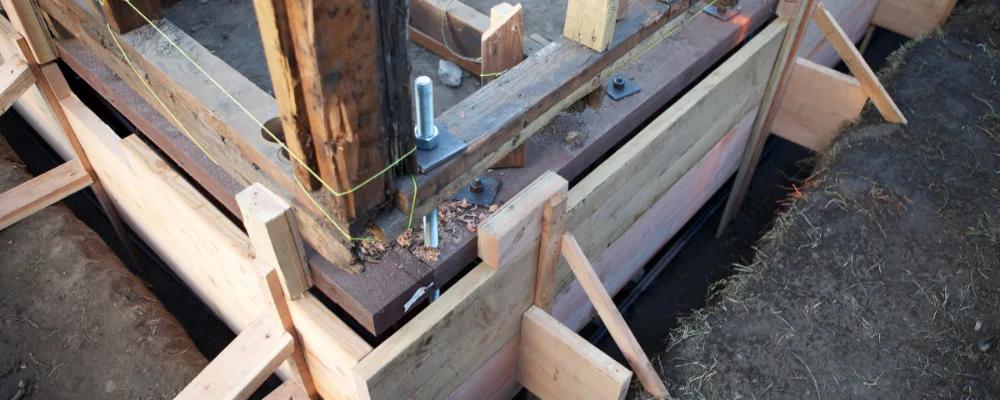Foundation engineering is one of the fundamentals of the stability and safety of a building. You can raise your building to any height based on the foundation. Among the various methods utilized for deep foundations, the drilled shaft foundation, or shaft foundation, is the major one.
This article will illuminate drilled shaft foundations – what they are used for, how their design transfers load so effectively, their pros and cons relative to other options, and the process involved in installation.
What is a Shaft Foundation?

A shaft foundation, commonly referred to as a drilled shaft structure, is a deep foundation system designed to sustain large structures. Unlike ordinary foundations that sit within the topsoil, they reach farther below the surface whenever the upper layers cannot reliably bear the weight. Rather than distributing stress across a broad area as a raft foundation would, a shaft foundation funnels the load directly to the stable ground lying deeper. These cylindrical columns can be tailored regarding both diameter and depth relative to structural demands and soil-bearing capacity at a site. They are commonly used in the construction of bridges, towers, and other tall structures where the weight needs to be transferred deep into the ground.
How Does a Drilled Shaft Foundation Work?
Drilled shaft foundations transfer load from the weak near surface to the stronger soil or rock layer at depth. This can simply be done by boring a deep hole, inserting a steel reinforcement cage, and then proceeding to pour in concrete. This method effectively distributes the load to stable layers below, providing reliable support for heavy structures.
Types of Drilled Shaft Foundations
There are different types of drilled shaft foundations for various conditions:
- Straight Shaft: A simple cylindrical shaft filled with concrete. It is the most basic type and is used when the soil conditions are fairly uniform.
- Belled Shaft: The bottom of the shaft is widened to a bell shape for extra support. This type increases the bearing capacity and is useful when deeper layers are not strong enough alone.
- Underreamed Shaft: Similar to a belled shaft but with several widenings for more friction. This type provides additional resistance against heavy loads by increasing the surface area in contact with the soil.
- Socketed Shaft: A shaft drilled into rock for strong support. This type is used when very strong support is needed, and the shaft is anchored into the bedrock to provide maximum stability.
Advantages of Drilled Shaft Foundations
Drilled shaft foundations have many benefits:
- High Load-Bearing Potential: They can handle heavy loads, making them great for tall buildings and bridges. This is because they transfer the load to deeper, more stable layers of soil or rock.
- Low Ground Motion: The construction causes minimal vibration, which is good for busy areas or buildings near other structures. This reduces the risk of damage to nearby buildings during construction.
- Versatile Applications: They work well in different soils, from soft clay to hard rock. This versatility makes them suitable for a wide range of construction projects.
- Reduced Settlement Risk: They transfer weight to stable layers, reducing the chance of sinking. This ensures that the building remains level and stable over time.
- Potential Cost Savings: They can be cheaper than other deep foundation methods for some projects. This is especially true for projects where the required depth is not excessively deep.
Disadvantages of Drilled Shaft Foundations
There are also some downsides to drilled shaft foundations:
- Complex Procedures: They need special equipments and skilled workers. This can increase the cost and complexity of the project.
- Quality Control: Ensuring the shaft integrity can be tough, especially in different soils. This requires careful monitoring and testing during construction.
- Weather Conditions: Rain and other weather can delay construction. This can prolong the project timeline and increase costs.
- Time-Consuming: Drilling and filling deep shafts can take weeks. This is because each step of the process needs to be done carefully to ensure the stability of the foundation.
Construction Steps

Building a drilled shaft foundation involves several steps:
- Subsurface Exploration: Check underground conditions, water levels, and design loads. This helps to determine the best type and size of shaft for the project.
- Drilling: Use a rig to create holes of the right depth and diameter. The hole needs to be straight and clean to ensure the stability of the shaft.
- Temporary Casing: If needed, use a casing to keep the hole stable during drilling. This is especially important in loose or sandy soils.
- Reinforcement Placement: Put the steel reinforcement cage in the hole and support it properly. The reinforcement provides additional strength and stability to the shaft.
- Concrete Pouring: Pour concrete into the hole, making sure it covers the reinforcement and fills all spaces. This creates a solid, stable base for the building.
- Casing Removal: Remove the casing as the concrete is poured. This allows the concrete to come into direct contact with the soil, providing additional friction and support.
- Curing: Let the concrete harden for a few days before applying any weight. This ensures that the shaft is strong and stable.
Practical Tips
Here are some tips for installing drilled shaft foundations:
- Proper Planning: Plan the shaft layout and type carefully to meet requirements and site conditions. This ensures that the foundation is strong and stable.
- Quality Material: Use strong concrete and good steel reinforcement for durability. This helps to ensure that the shaft can support the weight of the building.
- Skilled Manpower: Hire experienced engineers and workers for the job. This helps to ensure that the construction is done correctly and safely.
- Regular Inspections: Check the shaft during construction to catch any issues early. This helps to ensure that the foundation is strong and stable.
- Environmental Considerations: Think about noise, vibration, and groundwater management during drilling. This helps to minimize the impact of construction on the surrounding area.
FAQs
Drilled shaft foundations are ideal where topsoil is too poor to support buildings and mixed kinds of soil exist, including hard rock.
They can be very deep, often 20 to 30 meters,with respect to the load being carried and under soil conditions. They are therefore able to reach stable sections of either soil or rock.
Drilled shafts are adaptable and find usefulness in diverse kinds of soil, like soft clay or high strength rocks, among others. However, specific soil properties may require additional precautions, such as casing or slurry stabilization, thus making them favorable for various construction projects.

